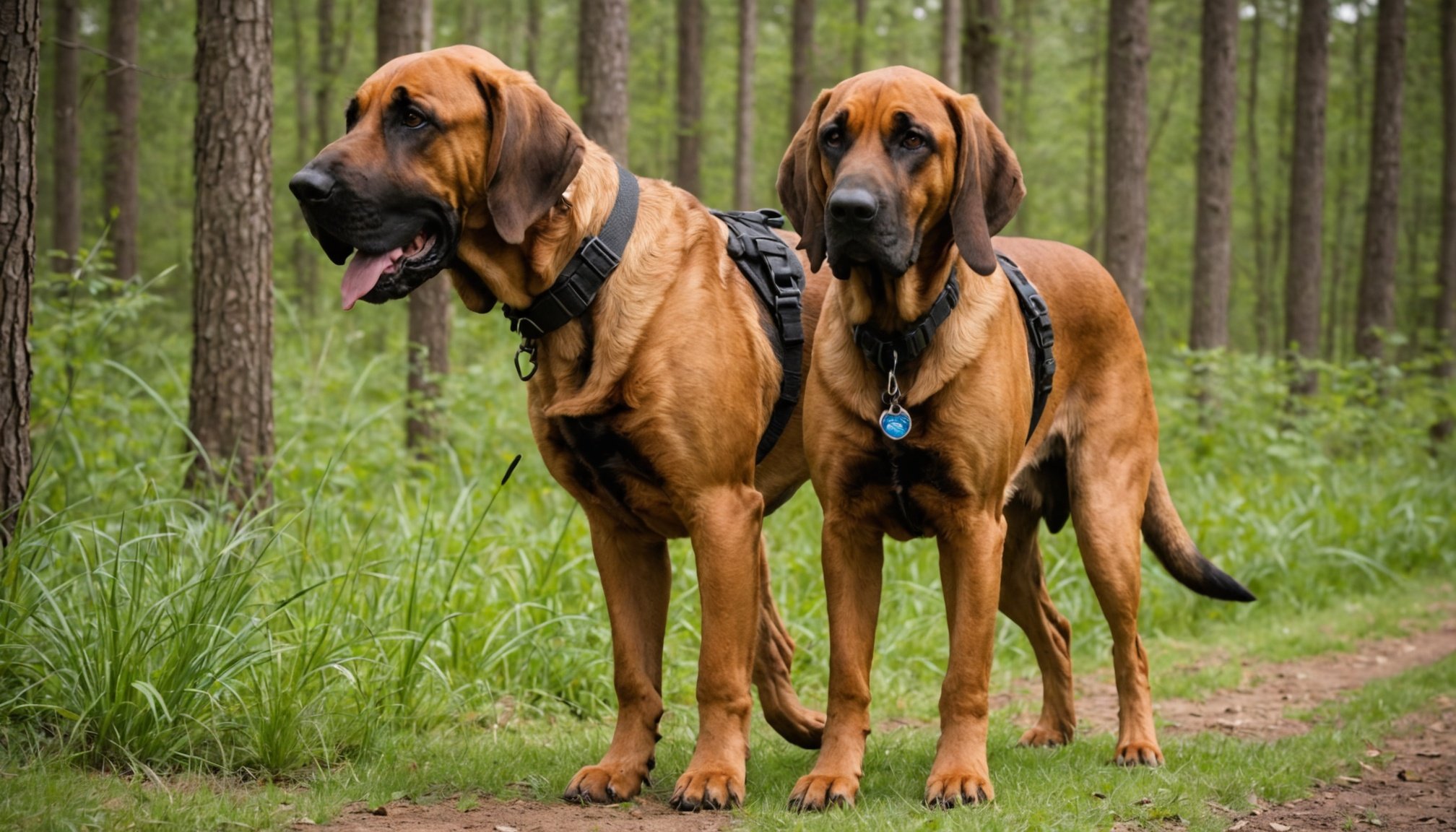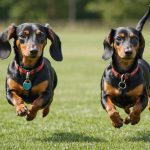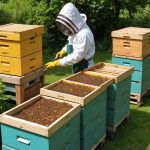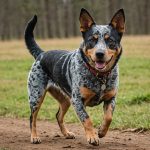Importance of Bloodhound Scent Tracking Skills in Search and Rescue
Bloodhound tracking skills are unparalleled in the field of search and rescue. Known for their extraordinary scent detection capability, Bloodhounds can follow a trail for miles, even days after it has been laid. This remarkable ability is due to a large number of scent receptors and a unique nasal structure, which allows them to detect and differentiate between various odours.
Role in Search and Rescue Missions
In search and rescue operations, a Bloodhound’s scent tracking skills are indispensable. Their acute sense of smell can track down missing persons by following both ground and airborne scents, often succeeding where human efforts fail. This is because they can stay focused on a single individual’s scent among countless others, effectively leading rescue teams to critical locations.
En parallèle : Understanding the Ideal Vaccination Schedule for Your Belgian Malinois: Essential Tips for Pet Owners
Impact on Search Outcomes
The effectiveness of Bloodhound tracking significantly influences the outcomes of search operations. Successful scent detection can mean the difference between life and death, as timely tracking increases the chances of locating individuals swiftly. The accuracy and reliability of Bloodhounds in scent detection are essential in reducing the time and resources spent on rescue missions, thus making operations safer and more effective. Their role in search and rescue illustrates the impact and value of these intelligent animals.
Training Techniques for Enhancing Scent Tracking Skills
Training a Bloodhound in scent tracking is an exciting journey that begins with mastering basic commands. Obedience training lays the groundwork for all future scent work exercises. Teaching commands like “sit,” “stay,” and “come” not only establishes respect but also ensures a Bloodhound’s focus during scent tracking training.
A lire également : Ultimate Guide to Monitoring Exercise for Your Energetic Australian Cattle Dog
Foundational Training for Bloodhounds
Fundamental training involves introducing Bloodhounds to the scents they will work with. It’s crucial to make use of familiar objects for initial scent introductions. Familiar scents help develop interest and confidence, vital for effective tracking.
Developing Scent Detection Skills
Engage your hound in scent work exercises tailored to enhance their olfactory abilities. Start with simple find tasks using items steeped in specific odours. As skills progress, increase the complexity and distance to encourage more advanced scent discrimination.
Using Scent Trails
One effective tool in scent tracking training is constructing a scent trail. Begin with short, straightforward trails that incorporate favourite treats or toys at the end. This not only motivates but also instils a sense of achievement. Extend the trails gradually, ensuring positive reinforcement for each successful completion.
These techniques foster a Bloodhound’s natural instincts, transforming it into a proficient tracker. Highlight key milestones to maintain excitement and enthusiasm in the training process.
Recommended Exercises to Boost Performance
Boosting your bloodhound’s performance through targeted exercises is crucial for honing their natural abilities, especially in scent discrimination and tracking. Let’s explore some recommended activities.
Nose Work Games
One enjoyable way to enhance a bloodhound’s scent tracking skills is through nose work games. These are structured activities where you hide a special item, like a toy or treat, encouraging your bloodhound to use its nose to find it. Nose work games are not only fun but also essential for improving focus and working ability, keeping your dog engaged and active.
Hide and Seek Tracking Activities
Incorporating hide and seek tracking activities into your bloodhound’s routine can substantially aid in training. By hiding yourself or another person and having your dog find you, it blends scent tracking with spatial awareness. This method challenges their detection abilities in a more realistic scenario, preparing them for situations requiring pinpoint accuracy.
Long-distance Scent Trails
For bloodhounds working in real-world settings, setting up long-distance scent trails is invaluable. These trails mimic the complexity and length of actual search and rescue missions. Gradually increasing trail length enhances endurance and precision, teaching your bloodhound to keep tracking over extended periods without losing effectiveness. Through these exercises, your bloodhound’s performance reaches new heights.
Common Challenges in Bloodhound Training
Training bloodhounds in scent tracking can present various challenges that require keen observation and effective strategies. Identifying and addressing distractions during training is crucial. Bloodhounds are naturally curious, and external stimuli can easily divert their attention from the scent trail, impacting their performance. It is essential to choose a training environment with minimal distractions and progressively introduce more complex scenarios to build their focus.
Overcoming inconsistency in tracking performance is another challenge. Bloodhounds may sometimes perform exceptionally well, but at other times falter. This can be attributed to numerous factors such as fatigue, terrain changes, or even scent variability. To address this, handlers should maintain a consistent training schedule, gradually increasing the difficulty level to enhance the dog’s reliability and confidence.
Handler-dog communication plays a pivotal role in effective training. Successful scent tracking relies on a harmonious relationship where the dog understands the handler’s cues and commands. Developing a communication system based on positive reinforcement helps solidify this bond. Clear, consistent commands and praise encourage bloodhounds to follow scent trails more efficiently, ultimately making them proficient trackers.
These troubleshooting strategies can mitigate training challenges, leading to the development of a skilled tracking bloodhound.
Success Stories from Search and Rescue Operations
Search and rescue (SAR) teams frequently spotlight the remarkable achievements of Bloodhounds. Their acute sense of smell can locate individuals over vast distances. These awe-inspiring instances highlight the essential role of effective training and experienced dog handlers in successful missions.
Inspiring examples abound, with narratives of Bloodhounds tracking missing persons over difficult terrains. Their unwavering determination often leads teams directly to those in need. In one instance, a trained Bloodhound located a lost hiker who had been missing for several days, navigating through dense forest and uneven ground. This showcases the profound impact Bloodhound teams can have.
Training methods for Bloodhounds in rescue missions emphasize repetition and reward-based learning. This fosters unwavering focus and drive in real-world scenarios. The partnership between dog handlers and dogs is critical, with a foundation built on mutual respect and understanding. Handlers utilize their training to interpret the Bloodhound’s cues effectively.
Testimonials from professional SAR handlers reiterate the undeniable bond between handler and dog. One handler noted how essential trust is: “Knowing my Bloodhound’s abilities and trusting his instincts has led to numerous saves and successes.” The shared experiences of dog and handler underscore the tandem’s value in SAR missions.
Expert Insights on Enhancing Bloodhound Performance
Understanding how to optimize a Bloodhound’s performance in scent tracking involves seeking expert advice and learning from scent tracking specialists. These training tips offer valuable insights into improving efficiency and accuracy.
Interviews with Professional Trainers
Several professional trainers emphasize the importance of patience and consistency. A renowned scent tracking specialist suggests starting with short tracks and gradually increasing the length and difficulty as the dog gets more confident. Setting a consistent training schedule helps Bloodhounds develop a reliable routine.
Recommended Resources for Further Learning
For those eager to delve deeper, several resources are available. Books penned by expert trainers, online courses, and workshops provide comprehensive training tips. Many scent tracking specialists recommend studying these resources to understand advanced techniques and methodologies.
Utilizing Technology in Training
Incorporating technology in training can dramatically enhance a Bloodhound’s scent tracking capabilities. GPS collars, for instance, allow trainers to monitor real-time locations and patterns. This technology helps identify areas where a dog excels or needs improvement, offering data-driven insights. Moreover, apps specifically designed for tracking training provide structured programs and logs tailored to a Bloodhound’s progress.
Visual Aids to Support Training Practices
Incorporating training visuals significantly enhances learning processes by providing clear, tangible examples. With the increasing demand for instructional videos, their role is paramount in both personal and professional settings. These aids not only simplify complex information but also contribute to better retention.
The range of visual resources available is vast. Instructional videos stand out, allowing for step-by-step demonstrations. They cater to diverse learning styles and can be paused or replayed, reinforcing understanding. Scent tracking guides serve as specialized resources in niche contexts, aiding in precise training where olfactory cues are pivotal.
Creating effective visual aids requires strategic planning. To start, clearly define the objectives of the training visuals. Ensure content is concise and focused on key points. Use engaging visual elements like graphics and annotations to highlight crucial information. Additionally, consider the audience’s needs—tailor content complexity and format accordingly. Utilising storytelling in instructional videos can make the material more relatable and memorable.
Ultimately, leveraging visual aids not only streamlines teaching practices but also fosters a more interactive and effective learning environment. Emphasizing practical examples and tailored content ensures learners engage fully, achieving a high level of comprehension and mastery.
Conclusion and Next Steps for Dog Handlers
For dog handlers committed to advancing their skills, focusing on training continuity is crucial. Continuously honing tracking skills requires dedication and strategic planning. Handlers should set achievable milestones, ensuring their progression aligns with their dog’s abilities. Regularly updating training plans ensures the techniques remain effective and relevant.
Adaptation is key as both skills and environments evolve. Continuous learning shouldn’t end with foundational knowledge but should expand into more advanced techniques and evolving best practices. Handlers can benefit from workshops, webinars, and courses that introduce new strategies and reinforce established skills.
Building a supportive community is invaluable for sharing insights and experiences. Engaging with other handlers and trainers offers diverse perspectives and solutions. This community serves as a reservoir of collective knowledge, ready to support members through challenges and successes.
In pursuing these next steps, dog handlers enhance their capabilities and their relationships with their dogs. Handlers should remain open to new methodologies, adapting to changes effortlessly, and embrace community learning. This approach ensures sustainable development and success in their journey.










